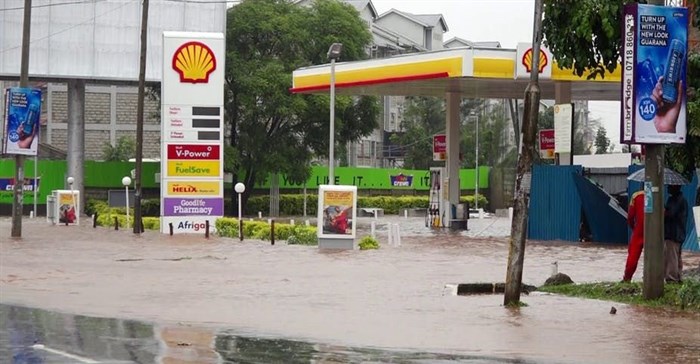Why Kenya's demolishing 4000 buildings in Nairobi

What is a riparian area and why is it important?
The riparian area is the land next to rivers, inland lakes and ocean shores. It’s the zone within which water bodies naturally fluctuate. Near the coast it is the tidal zone and along inland water bodies it’s where seasonal water level fluctuations, including floods, are accommodated.
Riparian land is a vital part of a water body’s habitat and its functions. It is the buffer between water and the land. It can store water and reduce the force of floods. Its vegetation stabilises soils and slows down fast flowing water, controlling the transport of sediment and the destructive energy of the water.
The important functions of riparian areas are already fully recognised by Kenya’s laws. Unlicensed development, cultivation and the removal of vegetation within these areas is outlawed.
Unfortunately, the laws haven’t been effectively enforced.
Why is Kenya’s environmental authority knocking down structures built on riparian land?
Every year heavy rains overwhelm the city of Nairobi’s drainage system and roads are inundated in water. Factors that contribute towards this include urbanisation, inadequate drainage design and maintenance.
The city lies within the Nairobi river basin. The name “Nairobi” came from the Maasai phrase “Enkare Nyirobi”, which translates to “the place of cool waters”. The Nairobi river’s tributaries flow through the city and downstream into the Athi River basin. These tributaries are the collectors into which the city’s entire drainage empties during heavy rainfall. If their flow capacity is diminished in anyway the potential for flooding, and associated risks including loss of human life, increases.
Although Kenya’s water laws long ago forbade any unlicensed interference in riparian areas, the areas are not physically demarcated. And the city’s watercourses have become constricted by illegal encroachments which are exacerbating the city’s drainage problems.
In response, Kenya’s National Environment Management Authority, working with the recently created Nairobi Regeneration team, is taking drastic action. 4,000 buildings have been earmarked for demolition. All intruding structures from shopping centres to temples and homes are affected.
The irony is that the buildings could not have gone up without the approval from the authorities. Corruption is being blamed. And to prevent this from happening again, senior government officials have pledged to root out perpetrators from within NEMA and city planning authorities.
The demolitions have occurred at a critical time. Whereas disruption of city roads through flooding has been an annual feature facing city residents every rainy season, the volume of water during floods is escalating due to Nairobi’s fast-paced urbanisation within and beyond the city limits. Progressively more open land surfaces are being sealed with impermeable structures and paving. And the resultant floods are translated downstream, potentially creating problems beyond the city.
What impact is this likely to have on the environment?
Any measures to restore and protect the riparian zones will benefit the city’s environment. The immediate benefit will be that the passage of flood waters be less restricted and that they will be less damaging.
But the way in which the demolitions are being done is concerning. Restoring land in riparian zones needs to be done carefully and should be subject to water, environmental, health and safety legislation safeguards. For example, the demolitions are risky and create waste that pollutes rivers and possibly contains hazardous materials.
What type of laws should be enforced to avoid this from happening in the future?
Kenya has appropriate legislation in place already. But the intentions of the legislation have been negated by inappropriate development proposals and building licenses being wrongly given out. This needs to be addressed, and stopped.
Moving forward there are many things that have to be considered including:
- Every river’s riparian needs have to be competently assessed. Every river is different which means that associated riparian zones vary and are determined by a host of considerations – including urbanisation. Whereas current laws do provide guidelines that set minimum and maximum limits, the riparian areas might need to be much greater, and they need to be demarcated.
- Planning should allow added buffers to the riparian zones.
- There is overlapping legislation within various acts and byelaws which is adding to confusion that should be clarified.
Setting down and enforcing these standards is crucial because Kenya’s “riparian question” is not restricted to the city of Nairobi. It applies to all cities and towns as well as rural areas.
For example, laws that forbid cultivation within riparian zones are being widely flouted in rural areas. Cultivation can be seen right up to riverbanks and the shores of inland lakes and reservoirs. Wetlands within river valleys are being drained to create livestock grazing areas or are being converted to vegetable gardens.
On top of this, infrastructure for numerous activities have been built along riverbanks, lakes, wetlands, and the ocean, and sometimes within protected areas. Many facilities were devastated by the floods earlier this year. And the frequency of flood inundations will increase with the ongoing land degradation that is occurring.
An adequate riparian and buffer zone is thus vital to help mitigate these flood risks. The National Environment Management Authority’s actions have a long way to go. But they have at least taken the plunge.
This article was originally published on The Conversation. Read the original article.
Source: The Conversation Africa

The Conversation Africa is an independent source of news and views from the academic and research community. Its aim is to promote better understanding of current affairs and complex issues, and allow for a better quality of public discourse and conversation.
Go to: https://theconversation.com/africa






















